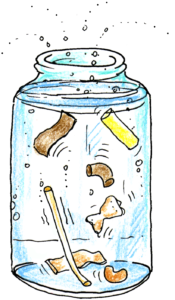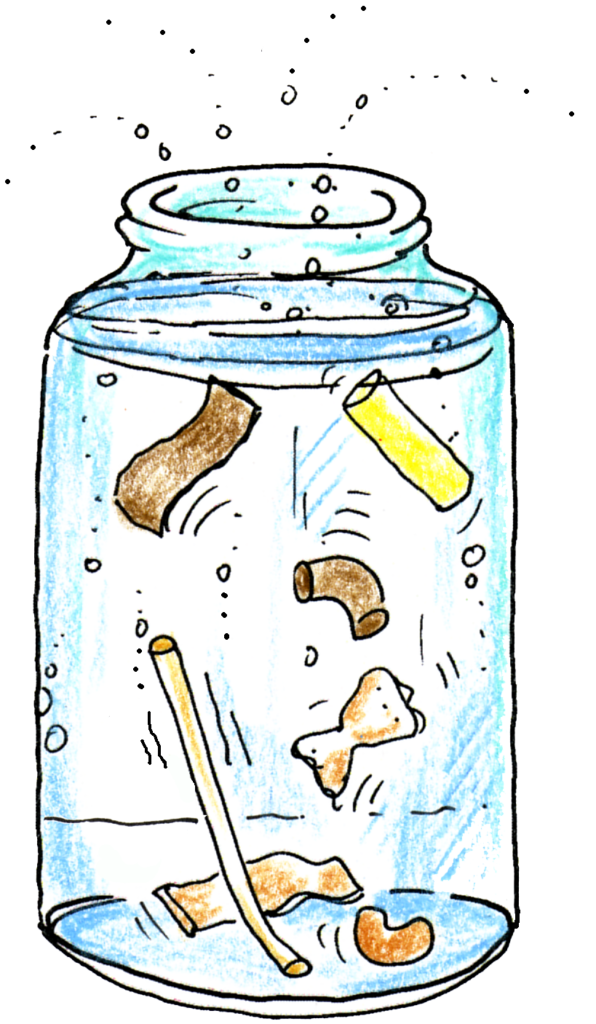 |
Pour a can of clear or lightly colored soft drink into a transparent container. Drop in a few pieces of raw pasta.
Initially the pasta sinks to the bottom of the container because each piece is denser than the liquid. Bubbles of gas attach to the pasta and it slowly rises to the surface. Your students are pretty interested at this point in just what’s going on! |
Take a moment to discuss possibilities as you watch the pasta rise and fall.
At the surface the bubbles detach from the pasta and the pasts sinks to the bottom of the container.
I was setting up a camera to video this and checked online to find that Steve Spangler posted a video of his version of the activity on his “Sick Science!” youtube channel. He chooses to use baking soda and vinegar instead of a soft drink and cooked pasta.
Not much time for set up and clean up? No vinegar and pasta handy in your classroom? Talk about the possible results and then show the video!
The liquid pushes up while gravity pulls down and the density of the pasta changes from less as the gas bubbles attach to more as the bubbles detach.
What happens if you use raisins instead of pasta? Large or small pieces of clay? Warm vs. cold soft drinks?


Love the dancing pasta!